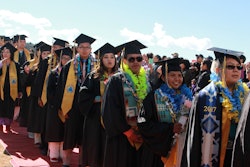When Jasmine Neosh was 17, she enrolled at a private liberal arts college in the Midwest.
“I was captured by the idea of a big, illustrious, private liberal arts school,” said Neosh. “I found the coursework stimulating and the instructors passionate. But there was something that wasn’t clicking. And I didn’t understand what it was.”
 Jasmine Neosh
Jasmine Neosh
“At first it was fine, and it was kind of interesting to be the only indigenous person in the program, possibly in the whole school,” said Neosh. “But after a while, I didn’t fit anymore. I got to the point where I felt, like many Native students, that maybe higher education isn’t for me.”
Neosh, 32, shared her experiences on a virtual panel on Tuesday, convened by GlobalMindED, a nonprofit that works to close the equity gap by creating and connecting talent pipelines with programs, content, and courses for students from minoritized backgrounds.
Neosh’s desire to study environmental sustainability and policy brought her back to the world of higher education. This time, she enrolled at the College of the Menominee Nation, a Tribal College and University (TCU) in Keshena, Wisconsin. TCUs play an integral role maintaining and building upon an Indian nation’s sovereignty while keeping cultural practices and languages alive.
It was only after arriving at a Menominee Nation that it finally clicked for Neosh what she had been missing all along.






















